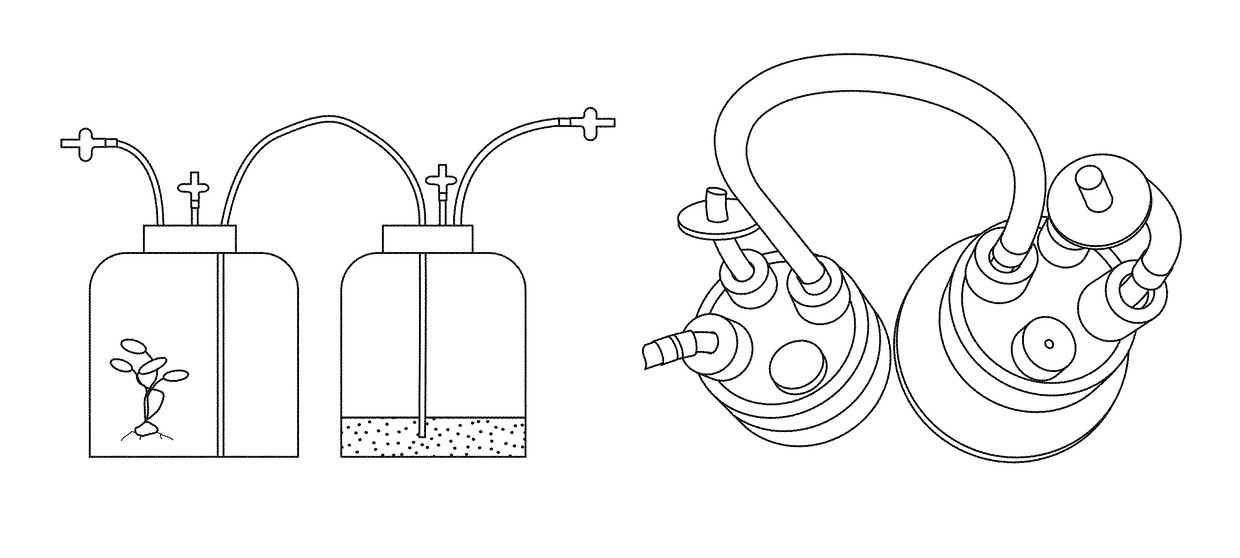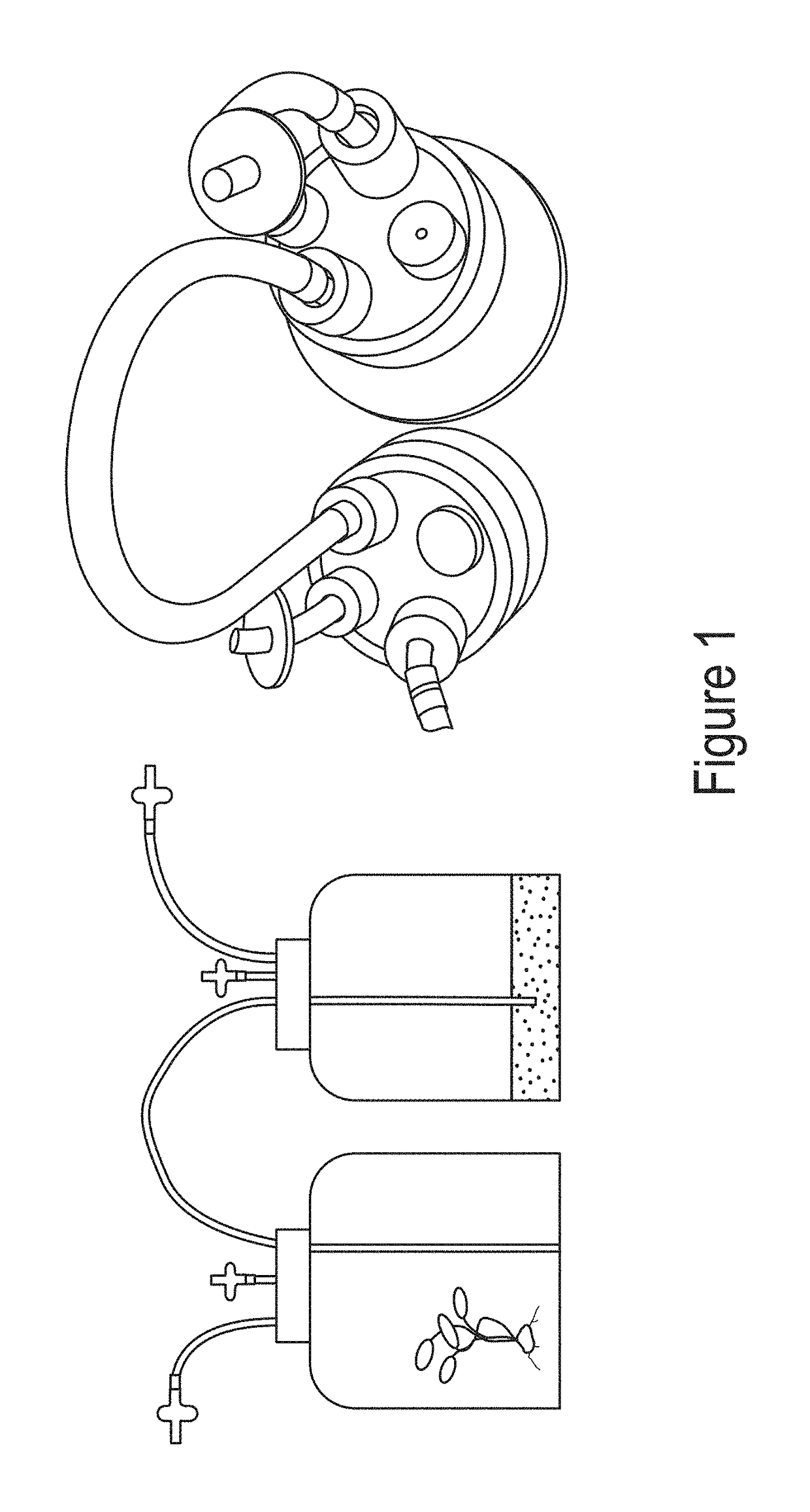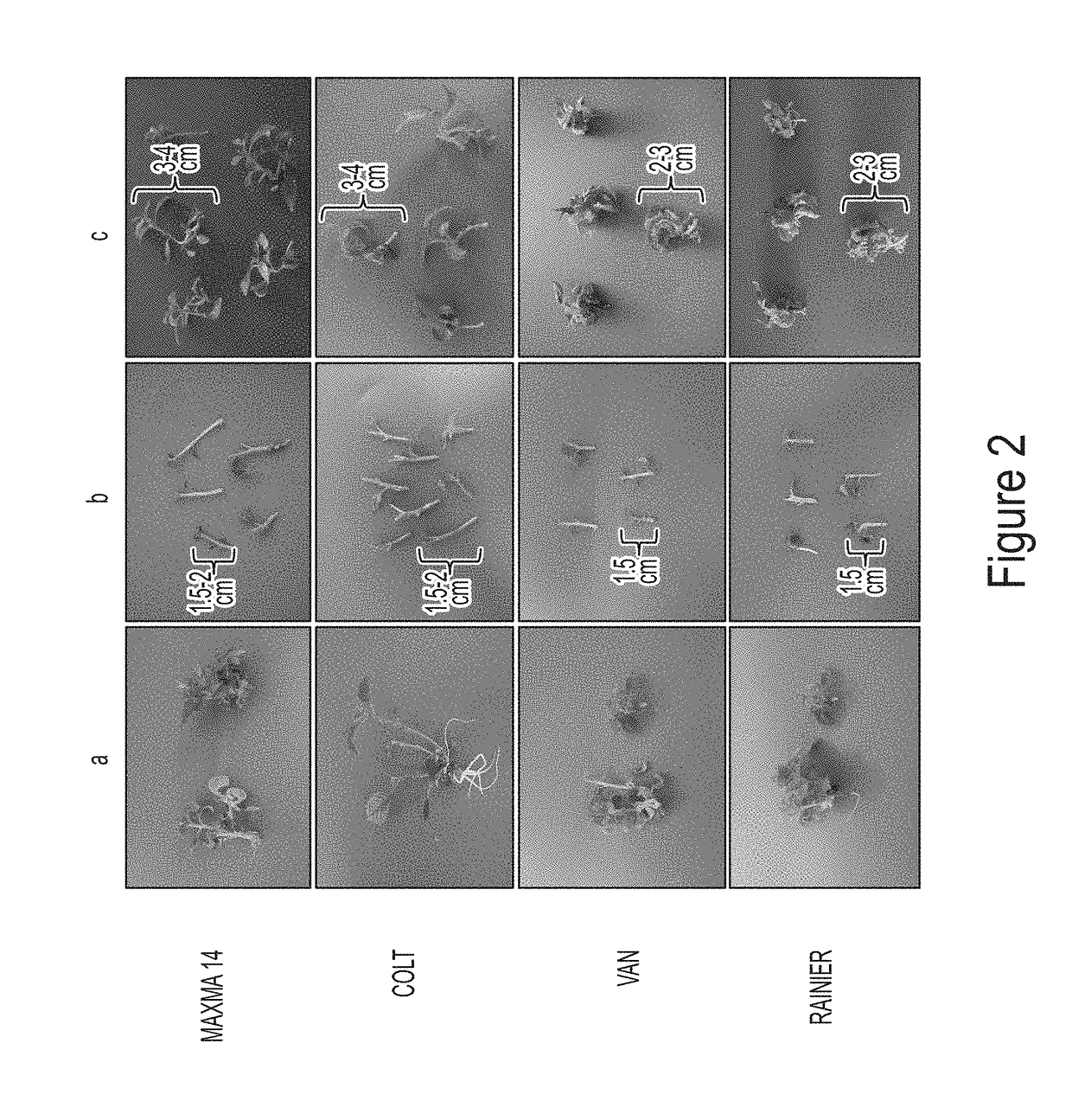In vitro culture method to increase the biomass and increase the number of variety plants and prunus spp injert holder, particularly prunus avium
a technology of injert holder and biomass, which is applied in the field of injert holder of prunus spp, can solve the problems of inefficient and time-consuming, increase the number of roots and potential proliferation, and complex structure of the plan
- Summary
- Abstract
- Description
- Claims
- Application Information
AI Technical Summary
Benefits of technology
Problems solved by technology
Method used
Image
Examples
example 1
Culture Method to Increase the Biomass and Increase the Number of Seedlings from Prunus avium Genotypes in Comparison with the Micropropagation Protocol in Solid Medium
[0048]In this example, the best parameters and conditions to use in the temporal immersion bioreactor to obtain the greater growth or biomass increase in the following Prunus genotypes are presented: MAXMA-14 and Colt rootstock, and the Van and Rainier varieties. Concurrently with this, we compared the performance from different immersion protocols in relation to a micro propagation protocol from the varieties in a solid culture medium.
[0049]First, tissue portions from the genotypes submitted were collected, which were then washed with water for 10 minutes. Subsequently, the shoots were disinfected with 50% commercial bleach for 20 minutes, they were immersed in a 2% benomil solution for 20 minutes, and then stored at a temperature of 4° C. for 900 hours. Before planting the plant tissue, it was submerged in a solutio...
PUM
 Login to View More
Login to View More Abstract
Description
Claims
Application Information
 Login to View More
Login to View More - R&D
- Intellectual Property
- Life Sciences
- Materials
- Tech Scout
- Unparalleled Data Quality
- Higher Quality Content
- 60% Fewer Hallucinations
Browse by: Latest US Patents, China's latest patents, Technical Efficacy Thesaurus, Application Domain, Technology Topic, Popular Technical Reports.
© 2025 PatSnap. All rights reserved.Legal|Privacy policy|Modern Slavery Act Transparency Statement|Sitemap|About US| Contact US: help@patsnap.com



